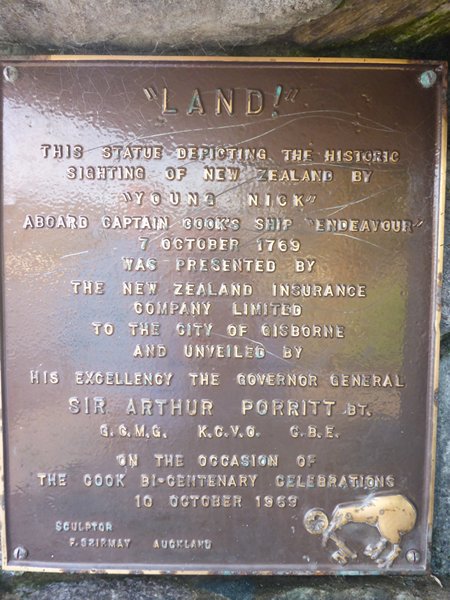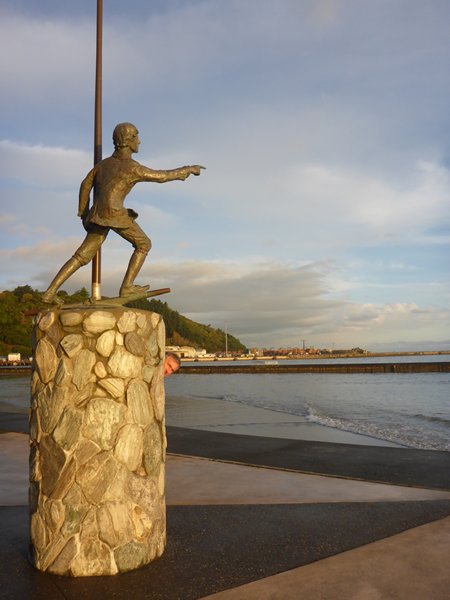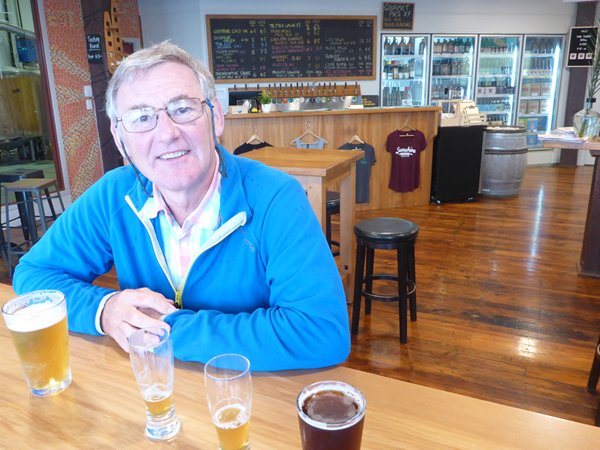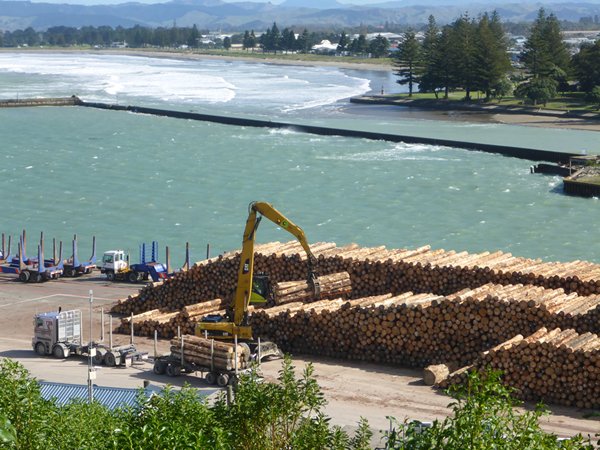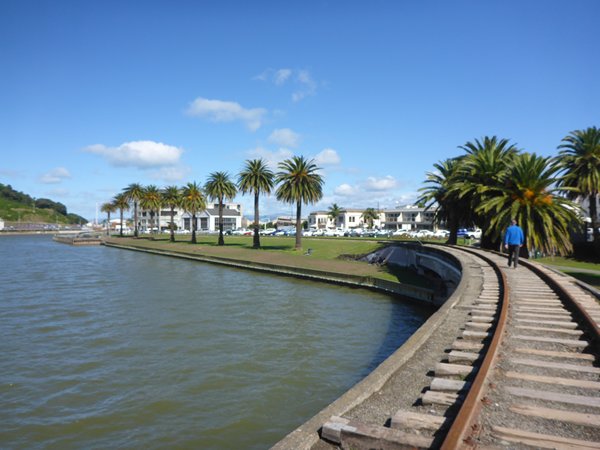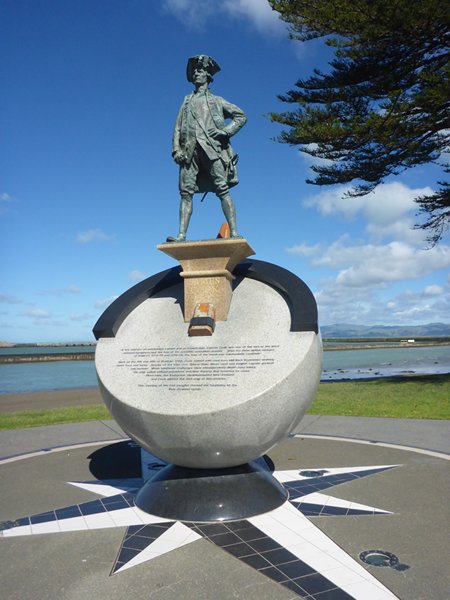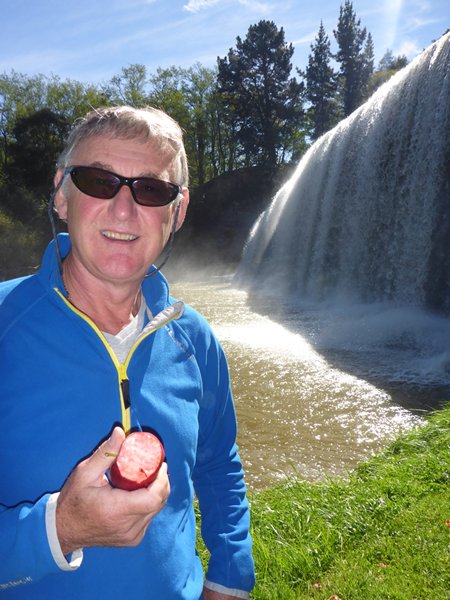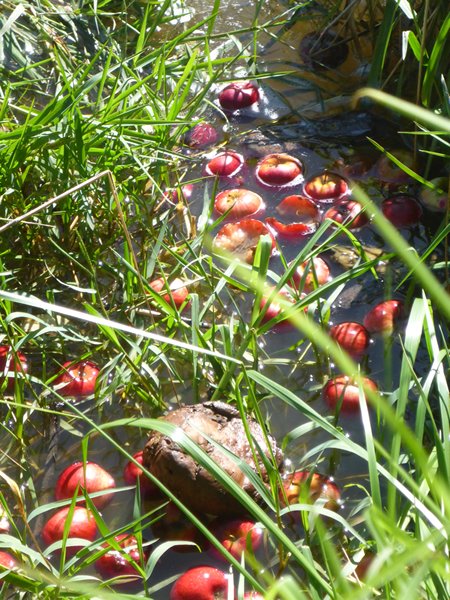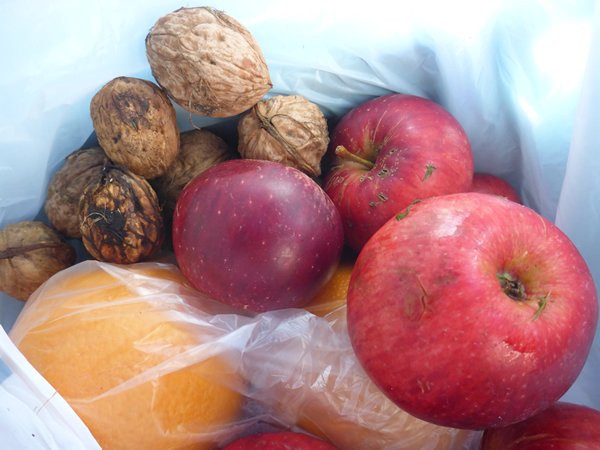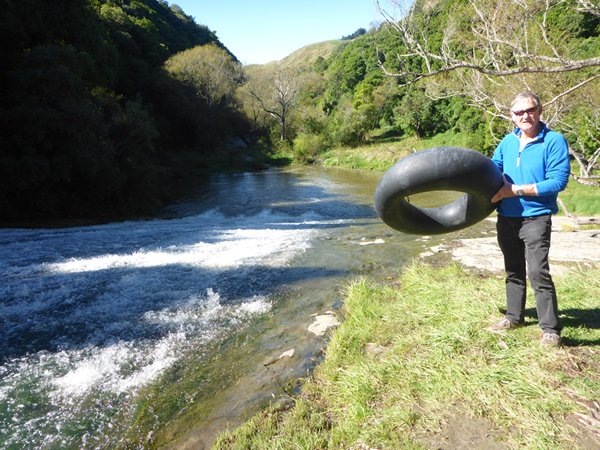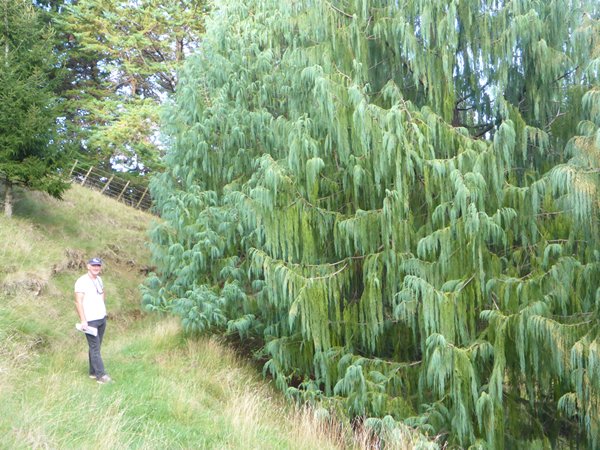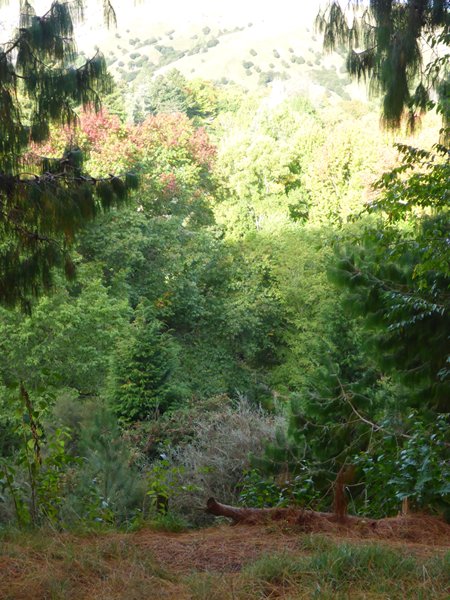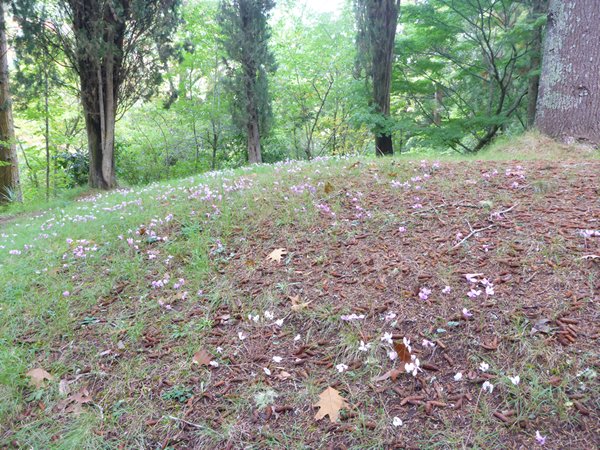Gisborne and Its Nice to have a Plan

|
A Storm in Gisborne and Its Nice to have a Plan Tui was quite literally blown and washed into Gisborne by land just as Cook and his crew were after two months at sea, but for him it was the natives who gave him a turbulent time while for us it was the weather. The initial interaction between Cook and the local Maori iwi led to a misunderstanding in which one or more muskets were fired and some Maori were killed. Subsequent arguments caused Cook to turn Endeavour about and as he left heading northward to first the bay next to Tolaga Bay and then Anaura that I have already mentioned where the welcome was positive, he damned this area with the name Poverty Bay, a measure of his feelings at the time and the fact it afforded him neither wood, fresh water or grass for the few remaining animals. We took a more passive approach and registered into the Top 10 Holiday Park just behind where ‘Young Nick’ first spotted the shore of Gisborne and Cook made his disastrous landfall. Not a single tent was pitched and we took a very pleasant ensuite cabin for three nights, a short walk from the communal kitchen and views of the 5 metre waves that were breaking loudly onto the beach around the sweeping bay. All that night the outside walls of the cabin and the windows rattled in the 150kph winds on one side and the constant trundling by of the double timber lorries, rumbling laden one way to the docks and then rattling empty the other way back to the forests. The next day rained hard most of the time so we deemed it ‘Museum Day’ and descended on the Tarawhiti Museum for some hands on experience we shared with numerous school groups of the models made by locals based on Leonardo Da Vinci’s inventions. In another gallery the equestrian paintings of Rosemary Parcell rejoiced in the elegance of movement so typical of these beautiful, curvaceous creatures (highly Googleable!). The novel part of the museum that stands out in my mind was the two storied wheel house taken from the wrecked Star of Canada cargo steamer back in 1912. From the Captain’s vantage point we looked up and down the muddy river and spotted the first signs of blue in the heavens above. Gisborne is at the mouth of where two rivers meet the sea and the weather took a turn for the better two days after our arrival so we walked to the top of Kaiti Hill for a fine view of the surf and surrounding country. The docks were busy stacking lumber ready to be loaded once the weather improved. The man made entrance to the protected harbour seemed mighty narrow for the passage of an ocean going ship and manoeuvring space for tugs would be very limited. Unfortunately we missed out on seeing how it was done. Instead we took a few minutes to look around the memorial garden carefully laid out to record Cook’s landing and filled with the plants that, picture this, Mr Banks must have grabbed in haste while Cook and his officers were trying to befriend the Maoris. It was evident from advertisements and brochures that Gisborne is a highly cultured area and creative activities abound across all ages and races which can be enjoyed by the public. With the weather once again on our side we sped up the Wharekopae Road to the Rere Falls and rockslide. It was great travelling at this time of year as autumn was approaching and the high season was at an end so we had this place to ourselves. No long walk to the falls this time, we just drove Tui into the soft surface carpark and stepped out to find pink fleshed windfall apples, sweet and juicy, and ripe walnuts on the ground ready for our gathering. The falls, though smaller than those at Whangarei, were a continuous wall of water for their entire width. For $10 a visitor could sit bum in the middle of a tractor inner tube and slide down a rock surface on a thin film of water and splash into a pond at the bottom of the rock slide. We could have done it for free but decided imagining the experience was enough. A visit to New Zealand’s national Arboretum at Eastwoodhill was in fact the third item on our days plan after the Hill at Gisborne and the Rere Falls and Slide, so we were doing well. Started by farmer, W. Douglas Cook in 1910 this 135 hectare site has blossomed into the arboreal haven it is today as much by accident as by design. In the four years before leaving to serve in the First World War Cook planted Eucs, Pines and orchard trees and cuttings and seeds from friends all over the North Island. It was not until after his recuperation from war time injuries in England that he learned about aesthetic tree planting in the gardens of stately homes and botanical gardens and through his friendship with the director of Kew Gardens. The friendly and enthusiastic lady at reception took one look at us and sent us off on the longest and steepest walk in the park to get the full appreciation of the area. As we climbed higher up the hills around the park we noted that the surrounding hills were barren by comparison. Denuded of native forest and over grazed by stock, evidence of erosion scarred the hillsides around the mono culture commercial plantations of dark green trees. Below us the autumn colours were starting to tint the leaves all shades of warm yellows and coppers on these now mature trees. I thought of Cook’s investment in the future. He could see the value of creating this repository of plant life after the threat of nuclear holocaust in the northern hemisphere. Although this never happened Cook started to be asked by people from whom he had originally obtained plants if he could send them some of the same back to replace those lost through pollution and loss of habitat. Eastwoodhill is now a trust and in 2005 was recognised as The National Arboretum of New Zealand. We came across two New Zealand couples on holiday together. One of them was gently nudging big ripe apples from a mature tree and we chatted for a while as we munched the juicy fruit from one of the apple trees Cook had planted for the refreshment of passing sheep drovers. I learned that the giant quince Jeanie had given me and I had made into jam are Chinese Quince, bigger and milder than the tart little ones I have used in the UK. Our journey away from this haven and down the dry, barren valley brought us onto a coastal plain of sheep trimmed vineyards skirted by sweet smelling lavender hedges. The smell of oranges, sacred kingfishers on telegraph lines. Kanuka and Manuka groves peppered with pastel coloured hives and Pampas grass thrived on regenerating hillsides left crinkly shaped from the feet of a thousand grazing sheep. Small herds of shiny coated cattle ranging over big areas of naturally green grass; this truly is a land of milk and honey. The fourth item on our day’s plan was to whet our whistles at ‘our local’ the Sunshine Brewery, conveniently just outside the gates of our camp. Just like Cook with his inspiring tree estate two young lads were sitting one day, waiting for the wave and discussing what they should do in life, when they came up with the idea of brewing some decent beer. That was nearly thirty years ago and their brewery is now the longest established independent craft brewery in the land and they are keen to remind us that many good days of surfing have been lost in sharing the love of good beer within the sounds of the surf on Waikanae Beach. Well the least we could do was enjoy some don’t you think. The fifth and last item on our list was to buy some fish and chips in the chippy opposite our camp and eat it while watching TV in our cabin. We arrived at the shop as an apologetic lady was washing the floor! So we had soup and a sandwich instead while watching the news of the latest cyclone ‘Keni’ unfolding. Combined with the last cyclone two weeks ago the effect was to ‘sink’ much of Fiji underwater. Little Blue penguins are dying of starvation in big numbers because their food is moving south into cooler waters. Possibly that was the cause of the demise of the one I showed you. Our non-cyclone storm had raged over Auckland at 213kph, causing trees to fall and ‘outing’ the electricity to one hundred thousand homes, so we and hopefully Zoonie, got off lightly. |
